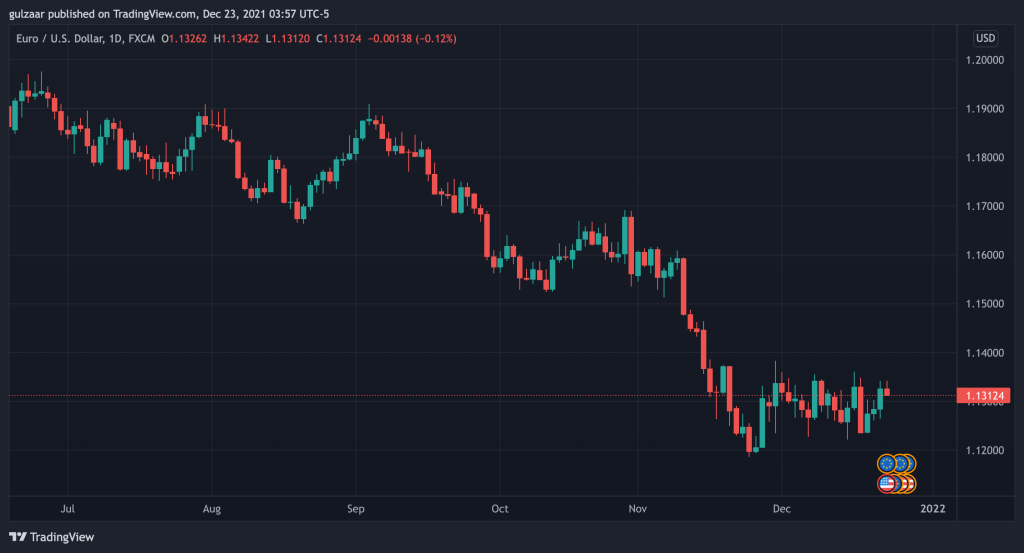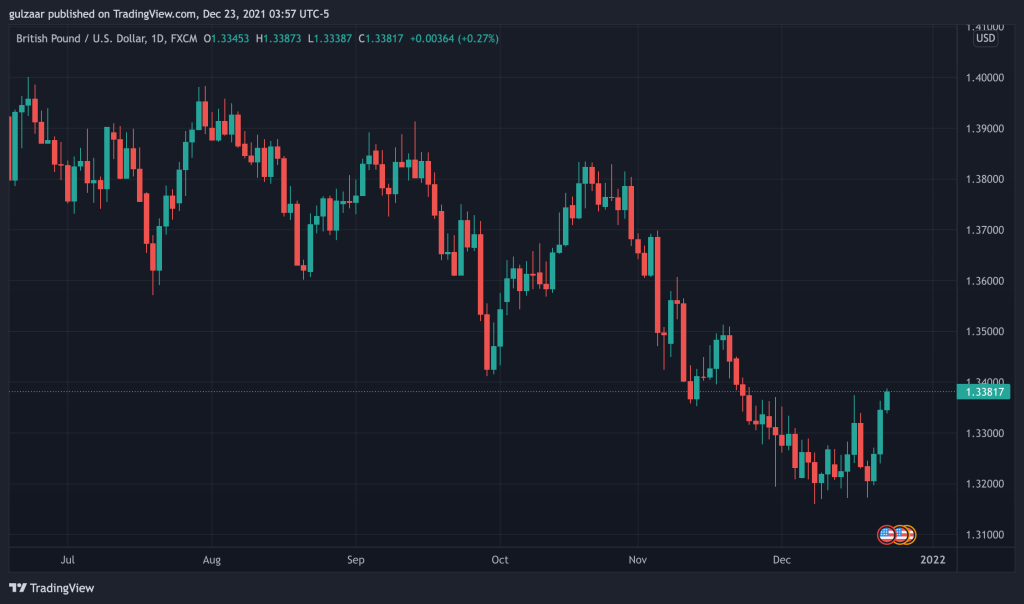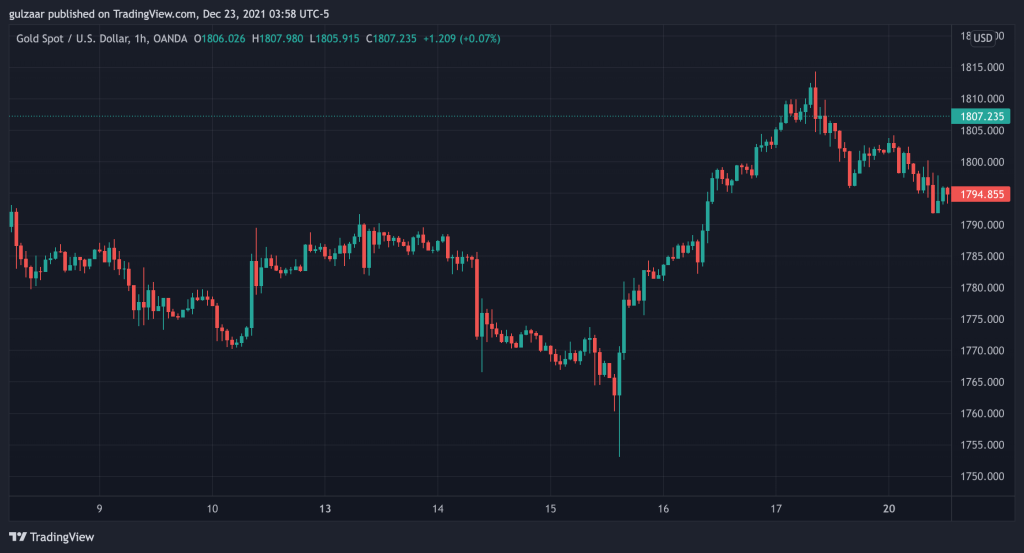The forex market has a lot of currency pairs you can choose from. You have the majors, crosses, and exotics.
Obviously, it will be overwhelming to try and trade every currency pair out there.
So how many pairs should you trade, and is there any benefit from trading less or more currency pairs?
Advantage of trading one currency pair
Trading a single currency pair on the foreign exchange market can be advantageous if you’re day trading. It allows you to become an expert in a particular pair, and keeps you focused instead of dividing up your attention.
Learn the behaviour of a pair
Currency trading requires patience, persistence, and learning to spot repeating patterns. The best way to develop all of these skills is to regularly watch the charts. This doesn’t mean being glued to your screen all day, but it does mean setting out some time every day to study the charts and doing it consistently.
If you watch a single currency pair every day at the same time for a few months, you’ll begin to notice some things about the way it behaves.
How strong are the pullbacks? Are they just wicks or do candles actually form?
What time does the currency pair usually break out of a tight consolidation?
Is this currency pair prone to fakeouts?
How many pips does the currency pair move?
Learning these behaviours and getting to intimately know the currency pair will make you a much better forex trader.
Staying focused in your trading
It’s tempting to set up a trading room with 10 screens and have each screen display a different chart, but in reality, that’s just going to divide your attention. The problem with trying to watch too many pairs at once is that you’ll end up missing trades and then trying to jump in too late.
Watching a single pair helps you focus on the charts and catch the trade when it comes.
Disadvantages of trading one currency pair
You can go days without getting any trades
The obvious disadvantage of watching a single pair is that it may be in consolidation for an extended period of time or it may not generate a signal for you.
For all this time, you just have to sit tight and watch the screen!
One way to get around this is to have multiple trading signals that you can trade off of. This way, you are able to get trades in a variety of market conditions.
May affect your trading psychology
The hardest thing to do in actual trading is to have the self-control to stay out of the market. The potential for making quick money has a huge effect on trading psychology and as a trader, you need to be able to control your impulses.
With every passing day that you don’t get a trade(or worse, a loss), your defenses will start to weaken.
The worst case scenario would be that you’ll start seeing trades that are not there, or try to jump in on random price movement. This get even worse if you trade for a living.
Advantage of trading multiple currency pairs
Much higher potential to get a trade
Watching multiple currencies at once allows you to get a much wider variety of signals. While you may not always get a trade every day on a single currency pair, if you watch multiple pairs, the probability greatly increases.
Ideally, you want to watch multiple pairs that are not correlated with others so that you can get diverse signals.
You can confirm trades with correlation
If the base currency is the same in more than one pair, those two pairs will have a certain degree of correlation with one another. Usually, they’ll move in the same direction, though the magnitude of the move will be different.
For example, you could be watching GBP/USD and EUR/USD. Both of these pairs have a strong positive correlation. So if you see a short position setting up on both EUR/USD and GBP/USD, there’s a good chance that the short will play out.


Other pairs can have a negative correlation. USD/CAD and AUD/USD are negatively correlated, which means they move in opposite directions. If you see a setup forming on one pair, you can confirm it by looking at the other and seeing if the opposite is happening.
Ideal for swing traders and position traders
As a day trader, you may find it difficult to look at too many pairs at once. However, if you’re a swing trader or a position trader, you only need to sit at the charts for a short time per day.
Let’s say you trade off of the 4 hour time period. A new candle won’t print until 4 hours have passed, so you have plenty of time to study multiple pairs.
Also, you won’t get setups too often if you trade a single currency pair, so looking at multiple currencies will help you take more positions per month.
Disadvantages of trading multiple currency pairs
Your attention is divided between pairs
The more pairs you look at, the more your attention is divided. While this may work for very long term traders, most traders will be overwhelmed by the excess information, especially if they are day trading.
It’s helpful to keep a whiteboard or notepad where you write down your analysis. This way, you can go back and forth between pairs and look at your notes to recall your initial thoughts.
Correlation can throw your judgment off
The frustrating thing about the Forex market is that a pair can be correlated to another…until it isn’t. EUR/USD and GBP/USD are highly correlated most of the time, but EUR weakness or GBP weakness can cause one pair to skyrocket or crash and the other pair to remain stable.
Sometimes, you’ll find a really good trade setup on one pair, but if you try to always correlate it with another pair, you may see conflicting signals and second guess yourself.
What currency pairs to trade
With all that out of the way, what should individual who trade forex look at? While most people like to trade the majors and some crosses, there are a few things you can ask yourself to determine which currencies you wish to trade.
How high is the spread?
The first thing to consider is the spread. Generally speaking, most brokers offer very low spreads on the majors. Crosses and exotics tend to have bigger spreads.
The spread is the difference between the bid price and the ask price, or the price you can buy and the price you can sell.
High spreads can eat a significant chunk of your profits if you only scalp a few pips here and there. Swing and position traders that take bigger trades will not mind a few pips here and there.
One thing to remember is to always factor in the spread when setting your take profits and stop losses!
How volatile is the pair?
Volatility is a really important factor in the currency market. Some symbols have very little volatility, which means they move very few pips in a given time period.
Other symbols are very volatile, which means they’ll move a lot more.
Depending on your trading strategy, you’ll need to see how volatile you need your symbols to be.
Gold and most GBP symbols are very volatile. Gold will move 100 pips and think nothing of it, while 100 pips on EUR/USD is considered a HUGE event.
Related:
Your strategy will dictate how many pips you need. Day traders that get in and out of positions may prefer volatility, whereas swing traders may not mind less volatility.
Volatility is a double-edged sword, though, as volatile currency symbols can wick up and down like crazy.

Related: Benefits of Forex trading
Conclusion
I hope I’ve been able to shed some light on how many currency pairs you should look at when trading. It really strongly depends on your individual trading style.
- USD symbols are fairly docile
- JPY symbols have moderate volatility
- GBP symbols are fairly volatile
- Gold is ridiculously volatile
Use this information, along with your strategy and the amount of time you have to devote to the charts every day to determine how many currency pairs you want to trade.
